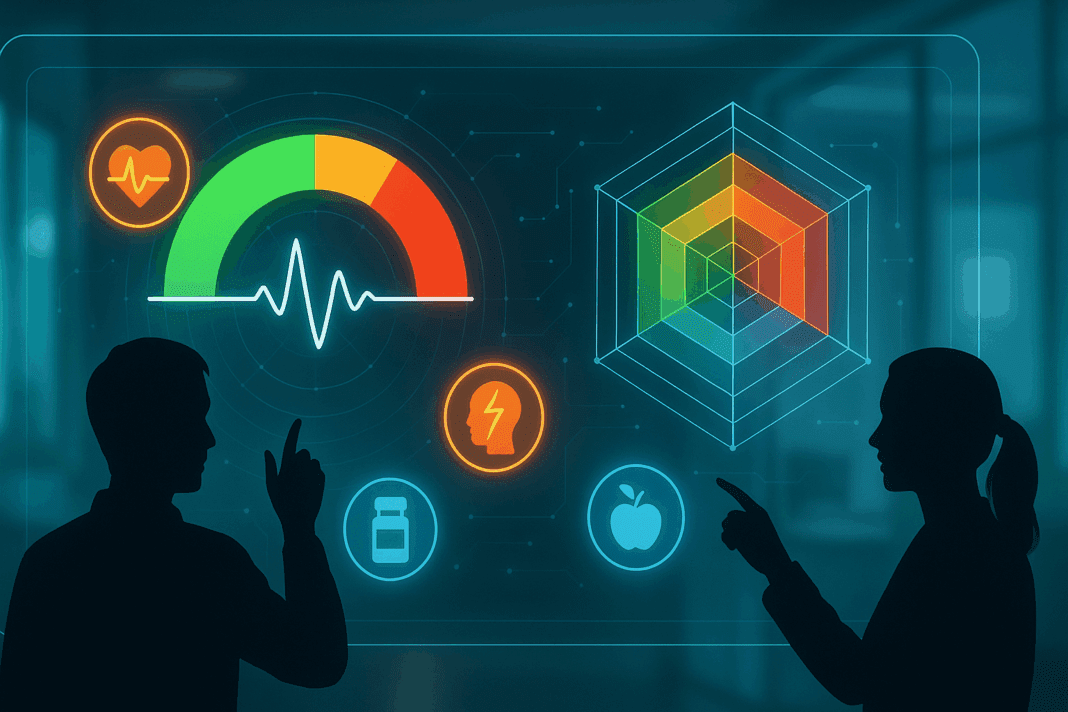Hypertension, often referred to as high blood pressure, is a silent yet formidable threat to cardiovascular health worldwide. It affects millions of people, frequently progressing without noticeable symptoms until severe damage has already been inflicted on vital organs. Effective monitoring and early intervention are critical in managing this condition and reducing its long-term impact. Among the innovative tools that have emerged in clinical and personal health management are visual aids like the hypertension diagram and the hypertension spider graph. These tools do more than merely display numbers; they offer a dynamic, interpretable format for recognizing trends, understanding risk factors, and identifying dangerous thresholds—such as a blood pressure reading of 300, which signals a severe and potentially life-threatening hypertensive crisis.
You may also like: Sudden Spikes in Blood Pressure: What Can Cause a Sudden Increase and When to Seek Medical Attention

The Role of Visual Tools in Hypertension Management
Visual aids have long been a staple in medicine, serving as educational and diagnostic tools that enhance both clinician and patient understanding. When it comes to managing hypertension, traditional charts and tables are being increasingly supplemented with more intuitive visual formats. The hypertension diagram, for instance, provides a color-coded, segmented visual representation of systolic and diastolic ranges. It is particularly effective in illustrating the transition from normal to elevated and then to high-risk categories. This visual format simplifies complex data, allowing patients to quickly grasp the seriousness of their condition without needing to interpret numerical thresholds on their own.
Similarly, the hypertension spider graph—a more recent addition to the toolkit—offers a multidimensional approach. Unlike linear diagrams, spider graphs allow clinicians to plot several variables simultaneously. For example, alongside systolic and diastolic readings, they might include factors such as cholesterol levels, BMI, physical activity, and medication adherence. This comprehensive visual representation makes it easier to detect patterns, correlations, and anomalies in a patient’s cardiovascular risk profile. The utility of the hypertension spider graph lies in its ability to present an integrated picture of overall health, empowering patients to make informed decisions based on a clear visual synthesis of data.
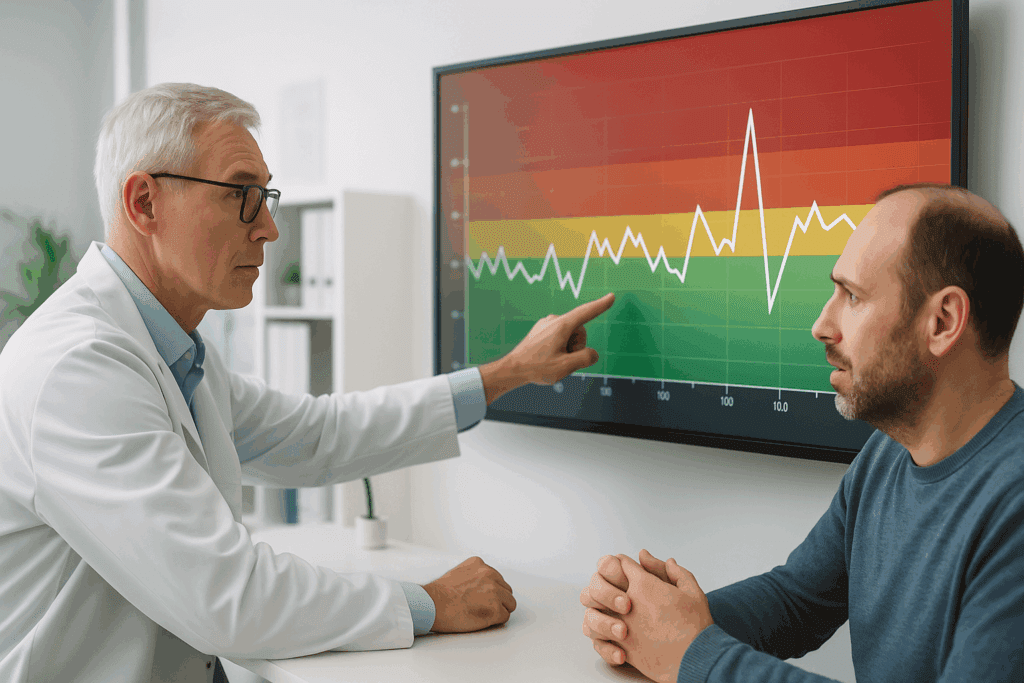
Interpreting a Hypertension Diagram for Clinical Insights
Understanding how to read and interpret a hypertension diagram is essential for both clinicians and patients. These diagrams are generally divided into categories: normal (systolic <120 mmHg and diastolic <80 mmHg), elevated (systolic 120-129 and diastolic <80), stage 1 hypertension (systolic 130-139 or diastolic 80-89), and stage 2 hypertension (systolic ≥140 or diastolic ≥90). A hypertensive crisis occurs when systolic pressure exceeds 180 or diastolic exceeds 120, and immediate medical attention is required. When the hypertension diagram incorporates these ranges into a visual continuum, it becomes easier to track progression and spot when intervention is necessary.
Importantly, these diagrams are not static. In electronic health records or digital health platforms, hypertension diagrams can be dynamic and interactive. They often allow clinicians to input multiple readings over time, generating a trend line that clearly demonstrates whether a patient’s condition is improving or deteriorating. For instance, a patient with initially elevated readings that gradually stabilize within the normal range due to medication and lifestyle changes can visually track this progress. Conversely, a sudden spike in readings—especially if approaching the critical blood pressure 300 mark—can serve as a red flag, prompting immediate reassessment of the treatment regimen.

The Power of the Hypertension Spider Graph in Personalized Care
While the hypertension diagram excels at providing a straightforward overview, the spider graph expands on this by integrating multiple variables into one visual. In the context of hypertension, this is particularly valuable, as the condition rarely occurs in isolation. Most patients present with comorbidities such as diabetes, hyperlipidemia, or obesity, each of which contributes to overall cardiovascular risk. By plotting these factors on a hypertension spider graph, clinicians can identify which areas require the most attention and which interventions might yield the greatest overall benefit.
For example, a spider graph might show a patient with moderately elevated blood pressure but severely poor dietary habits and physical inactivity. Although the blood pressure readings alone may not suggest immediate danger, the overall risk profile could warrant early intervention. In another case, a patient whose blood pressure is stable might still be at risk due to high cholesterol and poor stress management. The spider graph thus facilitates a holistic view, ensuring that no single factor is assessed in isolation. When used consistently, it can become a valuable part of long-term hypertension management, supporting proactive rather than reactive care.
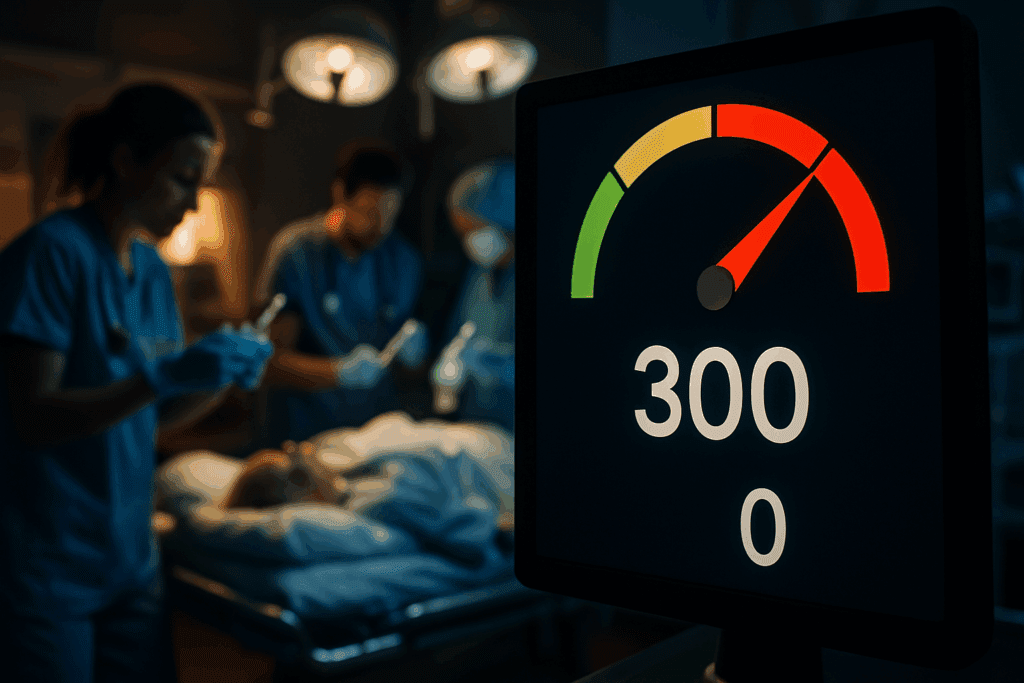
Recognizing the Danger: When Blood Pressure Reaches 300
Perhaps the most alarming figure in blood pressure management is a reading that reaches or exceeds 300 mmHg systolic. Such a measurement indicates an extreme hypertensive crisis, one that places the individual at imminent risk of stroke, heart failure, or aortic dissection. At this level, the heart is under tremendous strain, and immediate medical intervention is not just advisable—it is imperative. While rare, such occurrences are not unheard of, particularly in patients with poorly managed or undiagnosed hypertension, or those who abruptly stop their medication.
In clinical practice, the presence of a blood pressure reading of 300 prompts a full cardiovascular assessment. Emergency protocols are activated, and intravenous medications are often administered to lower blood pressure in a controlled, gradual manner. What makes tools like the hypertension diagram and hypertension spider graph so critical in these situations is their ability to contextualize this extreme data point. Seeing a spike to 300 on a time-series diagram or as a spike across all axes of a spider graph vividly underscores the severity of the situation, both for clinicians and patients. It transforms abstract numbers into a compelling visual narrative that demands attention.
How Visual Tools Improve Patient Engagement and Health Literacy
One of the often-overlooked advantages of using visual tools in hypertension management is the impact on patient engagement. Many individuals with chronic conditions struggle to interpret complex medical data, leading to feelings of helplessness or apathy. Visual aids like the hypertension diagram bridge this gap by translating numbers into images that are immediately understandable. This not only boosts health literacy but also fosters a sense of agency. Patients who can see their progress—or deterioration—are more likely to adhere to treatment plans and make lifestyle changes.
The hypertension spider graph, in particular, supports goal-setting and self-monitoring. When patients see that reducing sodium intake or increasing exercise visibly improves one or more axes on the graph, it reinforces positive behavior. It also allows for nuanced conversations during clinical visits. Rather than focusing solely on blood pressure readings, providers can discuss the broader context, showing how different aspects of a patient’s life are interrelated. This comprehensive, visually driven approach makes for more personalized, impactful care.
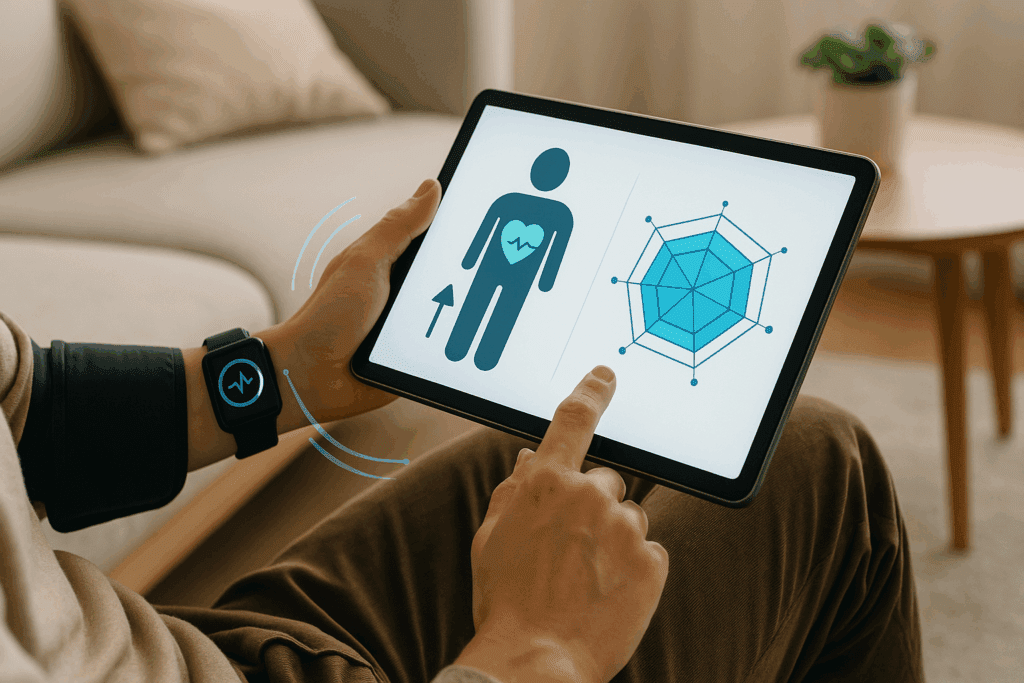
Technology Integration: Digital Platforms and Remote Monitoring
As healthcare increasingly moves toward digital platforms, the integration of tools like the hypertension diagram and spider graph into telehealth and mobile applications is transforming patient care. Modern apps now allow users to input daily blood pressure readings, track dietary habits, and monitor medication use, all within a visual interface that mimics the structure of these diagrams and graphs. With color-coded alerts and trend analysis, these tools provide real-time feedback, encouraging users to stay consistent with monitoring.
Furthermore, remote monitoring capabilities enable clinicians to view these visuals in real-time, making it easier to adjust treatment plans without requiring an in-person visit. This is especially beneficial for patients in rural or underserved areas, where access to specialized cardiovascular care may be limited. The ability to visualize and share data in this way bridges the gap between patients and providers, enhancing continuity of care. When a patient’s chart indicates a sharp upward trend, or when the spider graph flags deteriorating lifestyle factors, clinicians can intervene sooner and more effectively.
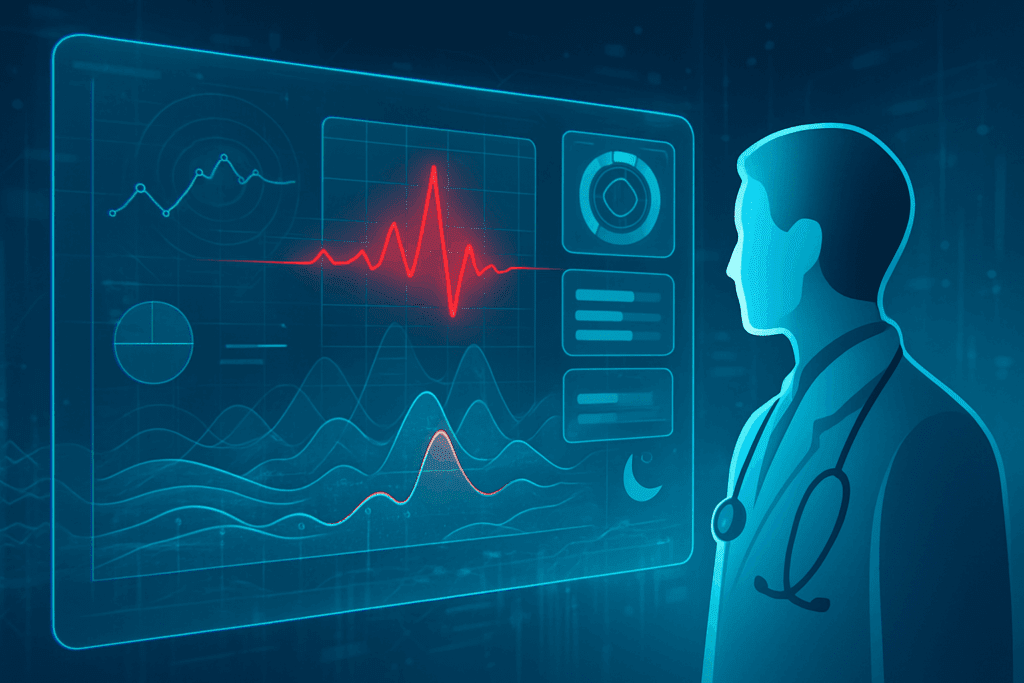
The Future of Visual Analytics in Cardiovascular Health
As technology advances, so too does the potential of visual tools in managing complex conditions like hypertension. Artificial intelligence and machine learning are beginning to play a role in enhancing the interpretive power of hypertension diagrams and spider graphs. By analyzing patterns across large datasets, AI can predict which patients are most likely to progress to critical levels, including those at risk of reaching a blood pressure of 300. These predictive analytics can then be visualized in real-time, offering clinicians a forward-looking perspective that complements retrospective analysis.
In addition, the customization of these tools will likely become more sophisticated. Patients may soon be able to tailor their hypertension diagrams to emphasize specific variables, such as stress levels or sleep quality, providing an even more personalized snapshot of their health. As these tools become more interactive and user-friendly, their role will expand beyond the clinical setting. Schools, workplaces, and community centers could adopt them for preventive health programs, further democratizing access to cardiovascular education and support.
Clinical and Ethical Considerations in Data Visualization
While the benefits of using visual tools in hypertension management are numerous, it is important to address the ethical and clinical considerations that accompany their use. Visual representations must be accurate and validated by clinical evidence to avoid misinterpretation. Overly simplistic diagrams can sometimes downplay the complexity of an individual’s condition, while overly complex visuals may confuse patients rather than inform them. Striking the right balance is essential.
Additionally, patient privacy must be protected when these tools are integrated into digital platforms. Data collected through hypertension diagrams and spider graphs must be stored securely and used responsibly. Clinicians should ensure that patients understand what the visuals represent and how they are being used in treatment decisions. Transparency, consent, and education are key to building trust and maximizing the efficacy of these tools. As with any medical technology, the goal should be to enhance—not replace—the human relationship between provider and patient.
Frequently Asked Questions: Understanding Hypertension Through Visual Tools
1. How can a hypertension diagram help detect early cardiovascular complications before symptoms arise?
A hypertension diagram serves not only as a representation of blood pressure ranges but also as a proactive health surveillance tool. By comparing sequential readings visually over time, subtle increases in blood pressure can be spotted well before they reach symptomatic or crisis levels. When used routinely in clinical settings or digital apps, the hypertension diagram allows clinicians to identify early risk indicators of complications such as left ventricular hypertrophy or arterial stiffness. In many cases, these signs emerge silently, and a diagram’s trend visualization can prompt more advanced diagnostic evaluations. The tool thus plays a crucial role in preempting major cardiovascular events through timely intervention.
2. What makes the hypertension spider graph especially useful in managing patients with multiple chronic conditions?
Unlike linear graphs, a hypertension spider graph can plot multiple variables on the same visual field, making it ideal for complex patients with overlapping risk factors. For instance, a patient with hypertension, obesity, and Type 2 diabetes might have axes representing blood pressure, glucose levels, BMI, and physical activity. This allows for an at-a-glance view of how each condition may be influencing the others. Moreover, the spider graph can be adapted for various clinical workflows, providing a customizable and patient-specific interface that supports more nuanced care decisions. When used effectively, a hypertension spider graph transforms a siloed understanding of disease into a holistic model of integrated chronic disease management.
3. What are the psychological impacts of visually seeing a blood pressure 300 reading on a digital chart?
Visualizing a blood pressure 300 reading can have a profound psychological effect, particularly when presented on a dynamic hypertension diagram or spider graph. Such high figures tend to create immediate concern, which can serve as a powerful motivator for behavioral change. For some, the stark visual of a peak in red zones reinforces the urgency of adhering to treatment, altering diet, or reducing stress. However, it can also trigger anxiety or panic if not framed within a clear action plan by healthcare providers. It’s essential, therefore, that clinicians provide emotional context and coping strategies when presenting such data to patients, ensuring that visual feedback becomes a tool for empowerment rather than fear.
4. How do hypertension diagrams support shared decision-making between patients and providers?
Shared decision-making thrives when both parties understand the data equally, and the hypertension diagram plays a central role in achieving this balance. Instead of abstract numbers, patients can see trends visually, allowing them to ask more informed questions about their treatment options. This clarity fosters collaborative discussions on whether to adjust medications, incorporate lifestyle interventions, or pursue additional tests. Additionally, clinicians can use the diagram to explain how even small improvements in blood pressure can shift outcomes over time. The result is a more engaged patient, who feels involved in and responsible for their own health trajectory.
5. What innovations are emerging in the use of the hypertension spider graph for remote monitoring?
As digital health continues to evolve, the hypertension spider graph is becoming increasingly integrated into remote monitoring platforms. New algorithms can now sync real-time data from wearables and home blood pressure monitors directly into a spider graph format. This allows both patients and healthcare providers to observe the effects of daily habits—like sleep quality or sodium intake—on their cardiovascular profile. Innovations such as automated alerts for abnormal readings across multiple variables help preempt complications without the need for in-person visits. These enhancements not only extend the utility of the hypertension spider graph but also bring continuous, context-rich monitoring into the homes of patients.
6. Can children or adolescents benefit from using a hypertension diagram or spider graph in pediatric care?
Yes, pediatric hypertension is an emerging concern, and visual tools like the hypertension diagram can be instrumental in early detection and education. For younger patients, these diagrams simplify complex medical information and can help demystify what high blood pressure means. A hypertension spider graph, meanwhile, can incorporate school-related stress, screen time, physical activity, and diet, making it highly relevant for pediatric assessments. Involving children and teens in tracking their own health through these visuals may also encourage lifelong healthy habits. Pediatricians increasingly recommend these tools not just for monitoring but also as educational platforms for children and their families.
7. How can medical professionals be trained to use visual tools like the hypertension spider graph more effectively?
Training programs are beginning to incorporate modules on data visualization as a key competency for chronic disease management. Providers need to understand not just how to read a hypertension spider graph, but how to communicate its implications clearly to patients. Workshops often include case simulations where clinicians practice interpreting and explaining multi-axis charts in real-time. Additionally, continuing medical education (CME) credits are being offered for modules that focus on integrating visual analytics into electronic health records. As healthcare becomes more data-driven, competency with these visual tools will be essential for providing high-quality, personalized care.
8. In what ways can a hypertension diagram contribute to public health research?
Aggregated hypertension diagrams from diverse populations offer valuable insights into regional trends and treatment efficacy. Public health researchers can use de-identified diagram data to identify patterns such as seasonal variations in blood pressure or disparities in hypertension control across socioeconomic groups. When standardized across platforms, these diagrams also support epidemiological modeling and healthcare resource planning. Unlike raw numerical datasets, a hypertension diagram adds a layer of visual clarity that can accelerate the interpretation of population-level data. This improves the ability to create targeted interventions and policies aimed at preventing blood pressure spikes, including those approaching a dangerous blood pressure 300 level.
9. Are there ethical concerns surrounding the use of detailed visuals like the hypertension spider graph in patient care?
Ethical considerations are paramount, particularly when visual data is integrated into digital health ecosystems. One concern is the potential for misinterpretation—patients might panic if they see high values without understanding the full context. Another issue involves privacy; data represented on a hypertension spider graph must be secured and anonymized if shared across platforms. Informed consent should also extend to how visual data is collected, stored, and used. Despite these challenges, when deployed responsibly, the spider graph enhances transparency and supports informed patient participation, reinforcing ethical principles in care delivery.
10. How might future advancements in artificial intelligence enhance the use of hypertension diagrams in predictive medicine?
Artificial intelligence is poised to revolutionize the utility of the hypertension diagram by enabling predictive analytics. Algorithms trained on massive datasets can detect early signals of risk that are invisible to the naked eye, such as micro-fluctuations in blood pressure trends that precede a hypertensive crisis. A future system might alert clinicians to the possibility of a blood pressure 300 reading days before it happens, prompting preemptive action. AI-enhanced diagrams could also adapt in real-time, highlighting which variables—like sodium intake or stress levels—are most influential for a particular patient. As these technologies mature, the hypertension diagram will evolve from a descriptive tool into a dynamic, anticipatory instrument for precision medicine.
Rethinking Hypertension Monitoring: From Numbers to Narratives
In conclusion, the integration of the hypertension diagram and hypertension spider graph into clinical practice and patient self-care represents a significant evolution in how we approach cardiovascular health. These tools transform raw numerical data into compelling visual narratives, empowering both patients and healthcare providers with clearer, more actionable insights. Whether helping to prevent a progression into stage 2 hypertension or identifying an acute crisis signaled by a blood pressure of 300, these visual aids play a pivotal role in timely, effective intervention.
More than just diagnostic aids, they serve as bridges—connecting the abstract world of medical data with the lived experiences of those affected by hypertension. They support a model of care that is proactive, personalized, and participatory. As digital health continues to evolve, these visual tools will only become more integral to managing complex, chronic conditions. Understanding their utility and applying them thoughtfully can help transform the way we approach not only hypertension, but cardiovascular health as a whole.
By embracing this visually-driven model of care, we can move beyond the limitations of traditional monitoring, creating a healthcare experience that is both data-informed and deeply human-centered. In doing so, we elevate the standard of care, reduce the burden of chronic disease, and give patients the tools they need to take control of their own cardiovascular destinies.
Was this article helpful? Don’t let it stop with you. Share it right now with someone who needs to see it—whether it’s a friend, a colleague, or your whole network. And if staying ahead on this topic matters to you, subscribe to this publication for the most up-to-date information. You’ll get the latest insights delivered straight to you—no searching, no missing out.
Further Reading:
Understanding your reading with a blood pressure chart
How to Read a Blood Pressure Chart and What the Numbers Mean


